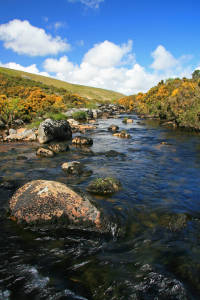Peat is actually partly decomposed vegetation, which probably doesn’t sound too appetizing when talking about whisky. Peat is hugely prevalent in Scotland due to the climate and environment. Scotland is home to a lot of moist flatland full of vegetation, and its this vegetation that forms peat.
Peat can be dug up from around moors and laid out to dry. Once dry, it serves as an energy source that can be lit to create fire. It burns for a long time and served the Scottish well as a fuel source for many centuries.
What Is Peat: What Does It Have To Do With Whisky?
The use of peat in the creation of whisky is related to the drying out process of the malt. The peat can be set fire underneath the malt in order to dry it out. The smoke from the peat has a distinct flavor that infuses into the malt.
Peat was used in the creation of whisky mainly due to lack of other options. Distilleries these days don’t need to use peat to dry out the malt, but many Scotch distilleries still do to retain the traditional Scotch whisky flavor. Many distilleries grow peat on their own land, as it is becoming more difficult to find naturally due to modern changes in the landscape.
When people describe a whisky they sometimes refer to its peat, mostly in phrases such as ‘heavy on peat’. Distillers can control a number of characteristics in creating a peat flavor, such as how long the barley is exposed for, at what intensity the peat burns at and what sort of peat is used.
Putting a Number on Peat
Beyond subjective reports, it’s possible to measure the amount of peat in the finished product. What the malted barley is actually absorbing as it is being smoked are chemicals called phenols, which are measured in parts per million (PPM). A whisky can have 0 PPM (no peat at all) or up to around 50-55 PPM in the case of Ardbegs Very Young.
